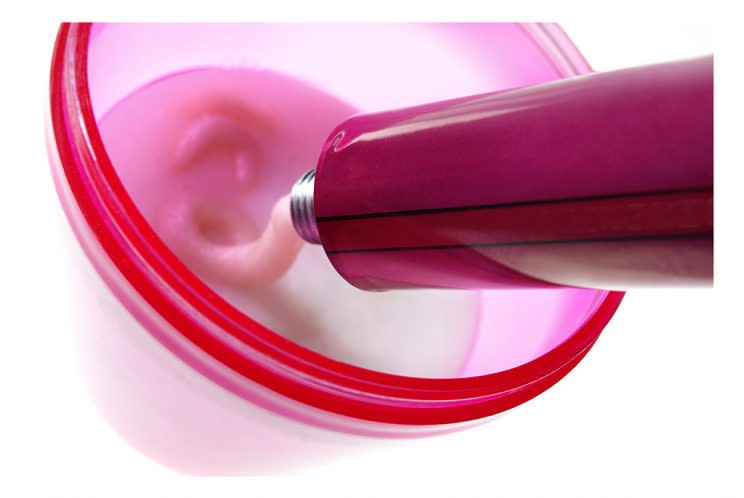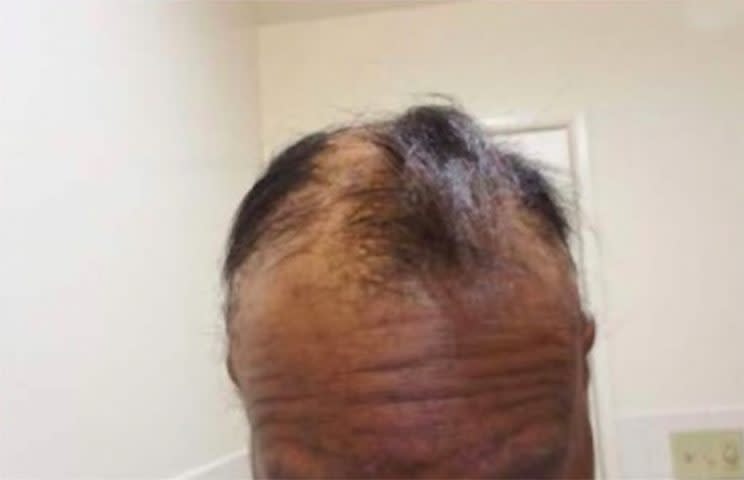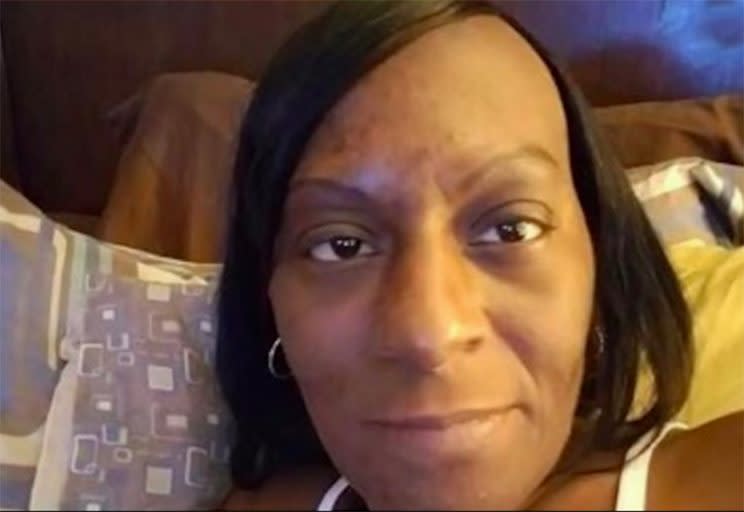Woman Sues L’Oréal, Claiming Hair Relaxer Caused Burns and Hair Loss

L’Oréal is the subject of a new lawsuit after a woman claimed a hair relaxer manufactured by the company left her partially bald.
Delicia Taylor says in the lawsuit that the product left her with bald spots, burns, blistering, and scabs on her scalp, per legal documents obtained by TMZ. She’s suing for more than $5 million in damages.
The product is Optimum Amla Legend No-Mix, No-Lye Relaxer, a hair relaxer that is marketed to African-American women under the Soft Sheen-Carson brand. The relaxer’s packaging promises “fuller, silkier hair” for $9.99.

Taylor’s lawsuit comes just one month after a class-action suit was filed against the company on behalf of 100,000 women who also claim that the company’s relaxer causes hair loss.
That lawsuit, which was filed in a California federal court in September, alleges that the relaxer causes “disturbing and distressing injuries including hair loss and breakage as well as scalp irritation, blisters and burns,” per the AFP.
In September, a L’Oréal spokeswoman told the AFP that “relaxers are technical products that can be used safely according to the instructions.” (L’Oréal did not respond to Yahoo Beauty’s request for comment on the latest lawsuit.)

L’Oréal markets the relaxer with claims that it contains amla oil, which is derived from an Indian gooseberry. However, the original lawsuit says that the relaxer contains “hardly any” amla oil and is instead filled with a “dangerous mix of irritants and potentially toxic substances.” According to the Soft Sheen-Carson website, amla oil is the last item listed on the ingredients list for the product (as “phyllanthus emblica fruit extract”), which suggests the relaxer does not contain much of it.
Cynthia Bailey, a diplomate of the American Board of Dermatology and president and CEO of Advanced Skin Care and Dermatology Inc., tells Yahoo Beauty that there are certain ingredients in the relaxer — and other chemical hair straighteners — that could cause issues.
Hair straighteners are usually made from lye, which is a strong corrosive chemical called sodium hydroxide, she explains. Lye — which this relaxer doesn’t contain, but many others do — straightens hair by breaking chemical bonds in the hair itself to release the tight curling of the hair shaft. “This chemical can chemically burn skin because it is a corrosive base,” she says. “It is important to understand that chemicals that are strong bases are potentially corrosive and can burn skin just like strong acids can burn skin.”
While the Optimum Amla Legend No-Mix, No-Lye Relaxer doesn’t contain lye, it does have lithium hydroxide, another a chemical that can cause burns. “I suspect that the lithium hydroxide may be significant here, as it is an alkali and caustic base much like sodium hydroxide is,” Bailey says. “Hair straighteners in this family of chemical are caustic and can burn skin.”

A chemical burn is a burn, she points out, and when skin is significantly chemically burned, hair follicles can be destroyed, resulting in permanent hair loss in the burned area.
Hair relaxers can cause what’s known as central centrifugal scarring alopecia, a form of balding, says Gary Goldenberg, medical director of the Dermatology Faculty Practice at the Icahn School of Medicine at Mount Sinai. “But this condition is thought to be multifactorial, and culprits may include relaxers, direct heat during styling, and seborrhea [a condition that causes scaly, red patches on the scalp],” he says.
While a person can experience hair brittleness and breakage from using relaxers, Bailey says that hair shafts are renewable, and “if the hair follicle remains present and growing, then new and strong hair will slowly replace the brittle, treated hair as the shaft grows out.”
However, if a person’s skin is burned to the point where hair follicles have been damaged or lost, it will not recover, and that person will experience permanent bald patches. “In fact, improper use of the more common sodium hydroxide straighteners has been long known to cause devastating damage to the scalp and hair,” she says.
A person’s scalp is “surprisingly resistant to injury relative to adjacent skin of the face, neck, and behind the ears, but it is not indestructible,” Bailey says. And, if someone uses another caustic chemical, such as hair dye, after using a relaxer, they could potentially irritate skin even more, increasing the risk of hair loss.
“The same concern with skin irritation holds true for other caustic hair products, such as peroxide dyes and permanent wave solutions, such as those made from thioglycolate,” she says.
Goldenberg agrees, noting that relaxers are more likely to cause damage when used in conjunction with other hair treatments. “Combined with other hair-care practices, such as direct heat to the scalp with a hair dryer, this product could cause scalp irritation that contributes to hair loss,” he says. “This is especially true if products are used too often and for a long period of time.”
Bailey points out that the use of strong and potentially irritating hair-care products is always risky. “When using a hair relaxer, any stinging of the skin would be an indication that the product is penetrating the skin and beginning to cause caustic irritation that may potentially result in a chemical burn,” she says.
Goldenberg advises patients to space out the time period between perms, relaxers, and other chemical treatments to minimize the likelihood of hair loss. However, those who have experienced hair loss and balding should proceed with even more caution. “For patients with scarring hair loss (scarring or central centrifugal scarring alopecia), relaxers appear to be one factor in this multifactorial process.”
Let’s keep in touch! Follow Yahoo Beauty on Facebook, Twitter, Instagram, and Pinterest.

